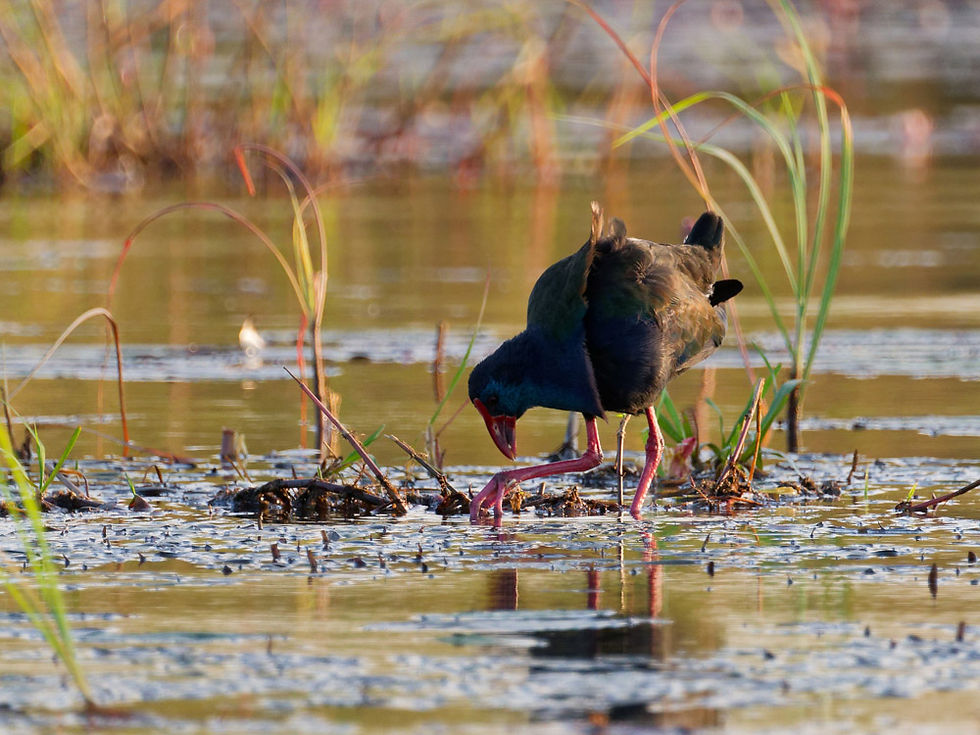Starting off this post with a pair of Blue Waxbills, the colour is so vivid it looks as though it has been painted on! Here are a few more bird shots:

Another amazingly-coloured little bird - this is the Blue Waxbill, a small seed-eating finch that inhabits semi-arid savannah country where it seems to prefer living around thorn trees which provides them a lot of protection from predators, flying or otherwise. They are quite common but, in my experience, they are also very shy making them especially hard to photograph. Add to this the fact that small birds hiding in bushes test both your patience as well as your camera's auto focus system. I must have shot 20 or 30 pictures of these two birds trying to get the angles right through the branches - using first the camera's AF, then swapping over to manual focussing which gave me more success.
The blue waxbill is one of those creatures that has multiple names depending on which country you are in: Southern Blue Waxbill, Blue-breasted Waxbill, Southern Cordon-bleu, Blue-cheeked Cordon-bleu, Blue-breasted Cordon-bleu and the Angolan Cordon-bleu.

A nice very colourful bird photographed from our breakfast table at Muluwa Resort. I had no idea what it was, so spent a some time hunting online and finally found it - this is a Yellow Throated Longclaw.

Reed Cormorant. Great shot by Natalie - the lodge we stayed at in Namibia was on the bank of the Chobe River, about 500 metres from Botswana over on the opposite side of the river. Although we could see quite a bit of wildlife from the resort's terrace, zipping up the river in a small tinny was more fun. Because the river was quite low at that time of the year, these boats had to be very cautious not to run onto the rocks - the same rocks populated with Water Thick Knees, doves, African Divers and Reed Cormorants. This lucky bird has just appeared with a squeaker fish in its beak (actually the squeaker fish's true name is the Upper Zambezi Squeaker or Bubblebarb Squeaker fish).
More images of birds seen on the Chobe River. Above left, another picture of a Reed Cormorant and two pictures of African Darters. Darters are also called snakebirds - because of their long slender necks and heads - which is often the only thing you see once they are in the water.

Great excitement one morning as an African Finfoot was spotted poking around on the little sandy beach below the resort's terrace. These birds are quite rare, especially so because they are very secretive. But this one wasn't - it was quite happy snuffling along the beach in front of our lodge and into the vegetation along the shoreline. They look a bit like a duck but they have longish red beak, a longish tail and extraordinarily coloured legs and feet.



African Jacana. The Jacana is an iconic waterbird with long legs and feet that enable it to hop about on waterlily pads looking for food. Not surprisingly it's also called the lily trotter.

Another easily recognisable waterbird found throughout the region is the African Swamphen.

This is the Water Thick-knee - seen here on its own tiny island in the middle of the Chobe River.

Squacco Heron, a small, beautifully camouflaged heron, that can usually be found hunting among the reeds and elephant grasses growing along the Chobe riverbanks.

If I can't identify the bird or animal that I photographed, and I can't remember what the game ranger called it, it's time to do a bit of research. The hardest birds to name are the LBJs (little brown jobs) because there are so many different species while they mostly look the same!
I think this is a Tawny-flanked Prinia.

Another resident of the wetlands is the Spur-winged Goose. One interesting fact about this goose is that some populations of this bird have been recorded as being poisonous - because they have a diet of blister beetles - these pests contain cantharidin. Ten milligrams of this is enough to kill a human, so it's probably best to stick with chicken.

Another mystery bird - I suspect this little chap is either a Canary or a Weaver bird of some sort but without seeing its front it's hard to make a definitive decision.

Southern White-crowned Shrike

Dark Capped Bulbul recognisable because of the dark cap on its head! Confusingly it's also called the Black Eyed Bulbul, Brown Capped Bulbul, Garden Bulbul, Kenya Highlands Dark Capped Bulbul, Tricoloured Bulbul and the White-eared Geelgat. Confused?







Comments